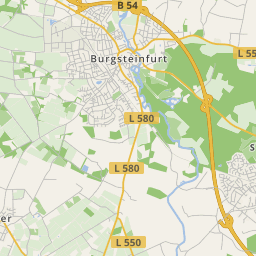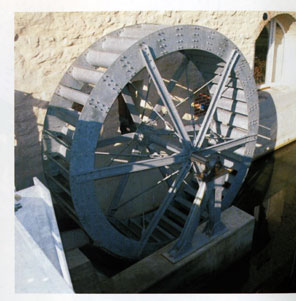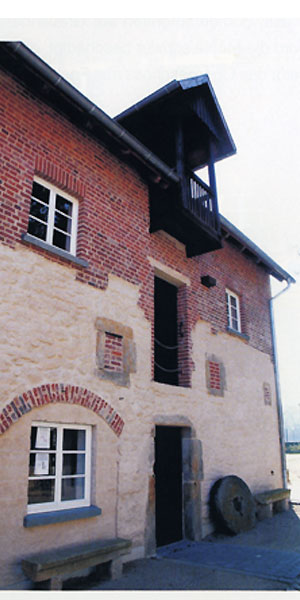












The Gravenhorst monastery mill was first mentioned in 1262. Earl von Ravensberg sold the mill to the Cistercian convent, which was founded in 1256.
In 1651 after the Thirty Years War, extensive structural alteration works were done. Since that time the lower part of the mill building has existed of quarry-stone brickwork while the upper part is half-timbered.
In 1803 by the Principal Decree of the Imperial Deputation the convent was secularised and expropriated. The property goes into the possession of the Prussian crown. Since 1823 the mill has changed owners. In 1937 the district Tecklenburg becomes the owner. The mill is decommissioned during the Second World War from 1939 to 1945.
In 1944 during a bombing raid on Gravenhorst the mill is heavily damaged, one bomb rips the half-timbered top off.
On the 16th of June 1945 shortly after the war, master miller leased the damaged mill. In painstakingly work he refurbished the mill and adds another storey. In 1954 he is able to buy the mill from the district Tecklenburg.
Around 1900 the mill gets an additional function as a sawmill. First a horizontal reciprocating saw is being built-in which runs up to the Klosterstraße. In 1952 the new sawmill is being constructed behind the mill. The sawmill doesn't exist anymore. Both buildings are being connected via a running bar over the Aa. For a more effective sawmill usage a gang saw machine is built in.
Until 1974 the 'working river', the Ibbenbüren Aa runs directly past the mill in direction Friedrich-Wilhelm-Eisenhütte and Hörstel. In the course of regrouping rural land of 1974/75 the river Aa is then being redirected.

In 1978 the milling operation as well as trading with grains, fertiliser, animal feed and seeds cease. In 1988 the sawmill works are also closed down. Ludwig Müller dies in 1991. The mill being leased and owned by the family Müller for 58 years is then purchased by the Förderverein Kloster Gravenhorst e.V. in the year 2003.
With the redirection of the river Aa the watermill loses it's habitual energy source. The existing iron water wheel, the pond and the two arched bridges were dismantled and the course of the river was filled in. The milling operation was then done exclusively with the power of an electric motor.
These days the mere trickle of water that runs into the mill lake comes from two Teudoburger Forest sources.
The foundation was able to purchase the watermill including the existing mostly intact technique from family Müller. The overhaul of building and technique, the excavating of the 'small river', the re-erecting of the dam and the two-arched bridge could be realised thanks to the help of the Dutch Stichting 'RIBO', the Förderverein Kloster Gravenhorst e.V. and private donations.
The mill has two pairs of stone and is powered by a breast wheel.

In a certificate from the year 1843, the mill and its special problem has been described already. The problem: 'grain-water with 2 grinding stones. Two sets of stones with two different wheels at the river 'Ahe'. Usually from Johanni to Michaeli the river Ahe doesn't have not enough water to be used daily.'
Water shortage during dry summers resulted here to the usage of a steam engine very early. The machine is housed in an annexe in front of the mill's south gable. It drives the central power distribution, the transmission.
When Ludwig Müller purchased the mill the steam engine doesn't exist anymore. In 1959 during the hot and dry summer he put in an electric motor, which is still in working condition today. The milling business and animal feed trading is active until the end of the 70ties.
The diesel engine from 1934 stationed in the mill came back to Gravenhorst in the course of the renovation in the year 2004. It stems from the Hardebeck’schen mill from Riesenbeck, which was to be renovated.
Opening Times:
Sightseeing by arrangement with the Förderverein Kloster Gravenhorst, Herr Döbber,
Telephone: 0 54 59 / 45 61
DA Kunsthaus Kloster Gravenhorst
Telephone: 0 54 59 / 91 46 - 0
(Administration)